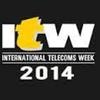
Last week, I started exploring why WebRTC is interesting for carriers and wrote about extending existing applications with WebRTC to keep the offerings fresh. But WebRTC may also be a way to compete with OTT apps that are riding on top of their network. Apps that are free and don’t provide revenue to the carriers. These apps have taken important value added service revenue away from the service providers, which have been estimated from Ovum to be in the billions of dollars and a few percentage points of overall revenue. Those dollars lost are significant.
The carriers could potentially offer their own services with WebRTC. After all, most people still get their “phone” from the carrier and we’re accustomed to the phones being loaded with some basic apps, such as a weather app, map app, etc. The carrier could offer their own apps relatively easily with WebRTC. Perhaps play the “freemium” game by providing some basic functionality, such as conferencing with three people. More people and you have to pay. I’m quite sure there are numerous similar examples and also numerous dissimilar business models. The opportunity is there.
Finally, I started off the blog last week talking about the enterprise and why WebRTC is a good fit there and I’ll end this two-part blog in the same place. Sometimes it’s easy to forget that most service providers also serve the enterprise as well as the singular consumer. So the service providers have enterprise offerings themselves. Therefore, if it’s good for the enterprise, then it’s good for the business arm of the service provider. Additionally, because the service providers have millions of subscribers, they operate some of the largest contact centers themselves. Supporting WebRTC in their own contact centers make sense, assuming, of course, they want to offer great customer service experience. And they should because this is a clear area of potential differentiation.












